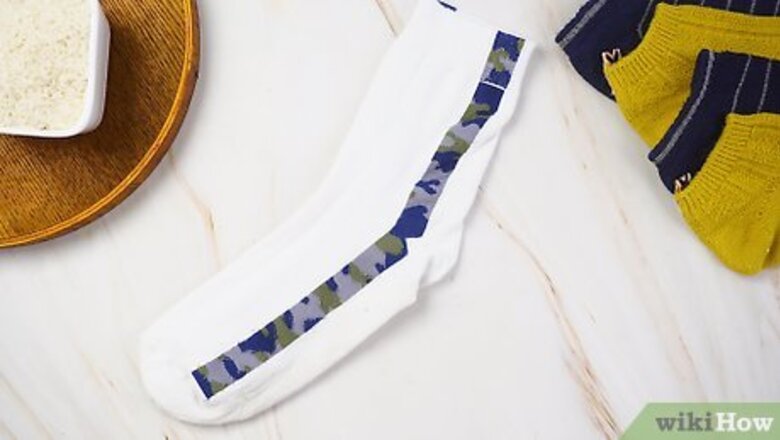
views
Filling the Sock with Rice
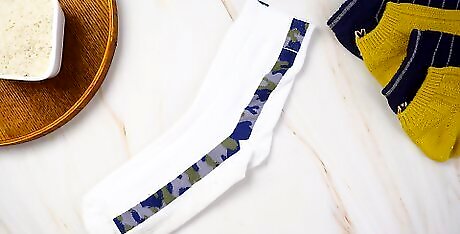
Pick an appropriate sock. For a smaller heating pad, use a mid-calf sock. For a larger heating pad, use an over the calf or knee sock. Use a sock that’s 100% cotton. Choose a thick sock with a tight weave to protect your skin from the hot rice and to prevent the rice from seeping out. It’s important to use cotton, because it won’t burn or melt in the microwave. Make sure the sock material doesn’t have metal threads in it, such as silver or copper, as these can ignite in the microwave. Don’t use socks that have holes, as the rice will fall out. For a larger homemade heating pad, use a small pillowcase instead of a sock.

Place the sock inside a tall glass. Using a cup as a holder for the sock will make it easier to fill the sock with rice. Insert the sock into a tall glass. Wrap the cuff of the sock around the rim of the glass to open the sock, just like you do with a garbage bag around the rim of the can. If the sock keeps slipping off the rim of the glass, use an elastic to keep the cuff in place.
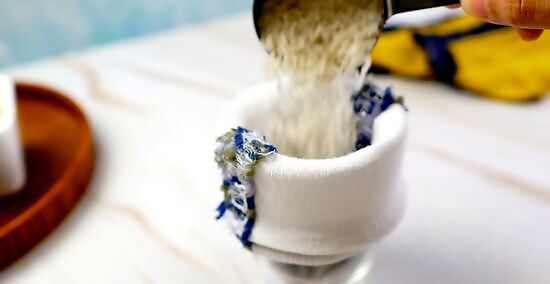
Fill the sock three-quarters full with uncooked rice. Don’t use instant rice or minute rice, as these are precooked and will be more prone to mold. You could need anywhere between 4 to 6 cups (780 g to 1.17 kg) of rice, depending on the size of the sock. Leave a quarter of the sock empty so you can tie a knot in the top. In place of rice, you can also use other dry grains, such as: Beans Barley Flaxseed Whole corn (not popping)
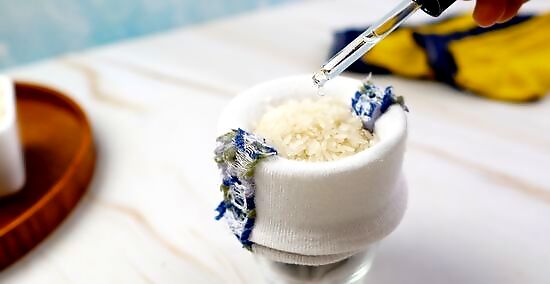
Add aromatics if you like. Aromatics will help the rice smell nice when you heat it up. Simply our or sprinkle the aromatics in with the rice. Aromatics you can add include: Five to 10 drops of essential oils Herbal tea Dried lavender flowers

Tie a knot at the top of the sock. Hold the sock cuff and carefully remove the sock from the glass. Twist the cuff closed to prevent the rice from falling out. Shake the rice around inside to spread it out evenly throughout the sock. Tie the top of the sock into a knot to keep the rice inside. Tying a knot instead of sewing the sock together allows you to change the filling as it becomes old and stale-smelling.
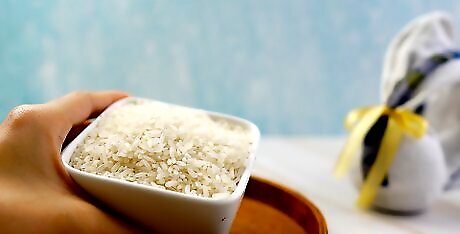
Replace the rice as necessary. Over time, the rice inside the bag may begin to smell stale or burnt. When this happens, untie the sock, dump out the rice, and refill the sock with fresh rice. This will prevent fire hazards, and keep your rice sock from stinking up the house every time you use it.
Heating the Rice Sock
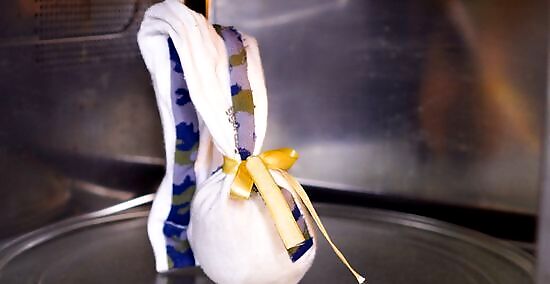
Heat the rice sock in the microwave. The fastest and easiest way to heat a rice sock is in the microwave. Place the rice sock in the microwave with a cup of water and heat it on high for one minute. Carefully remove the sock and feel it in multiple spots to test the heat level. Return the sock to the microwave for another 30 seconds if you still want it hotter. Be very careful when you remove the sock from the microwave, as it will be extremely hot. The water will add moisture to the air inside the microwave, and prevent the fabric or rice from getting scorched. Turn off the microwave immediately if you smell burning. Use an oven mitt or pot holder to remove the rice sock.

Warm it in the oven. Preheat the oven to 300 F (149 C). Place the rice in a deep baking dish or casserole dish. Cover the dish with a lid or aluminum foil. Fill an oven-proof dish or bowl with water. When the oven is at temperature, place the casserole dish on the top rack and the bowl of water on the rack below. Check the temperature of the rice sock after 20 minutes. Heat for another 10 minutes if necessary. The water in the oven will help to keep the air moist and prevent the rice or the fabric from scorching.

Place it on a radiator. In wintertime, you can heat your rice sock on a radiator if your house has them. Wrap the rice sock in a sheet of aluminum foil. Place the sock on the radiator and let it heat up for 30 minutes to an hour. Turn the sock every 10 minutes to ensure even heating.
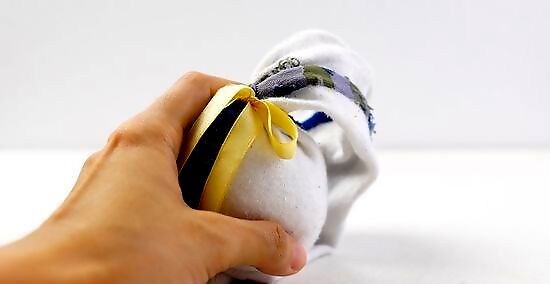
Freeze the sock instead. Rice socks can also be frozen and used like an ice pack. Place the rice sock into the freezer and let it chill for about 45 minutes. Before using, shake the sock to shift the rice inside and ensure even cooling.
Using the Rice Sock

Treat muscle pain and stress. Heated rice socks are ideal for soothing muscles that are sore or stiff from work, stress, or mild strain. Heat the rice sock to your desired temperature. Feel the bag to ensure there are no hot spots. Lay the sock directly on your sore muscle and leave it for 15 to 20 minutes.

Keep warm. A hot rice sock is a great way to get warm when you’ve got a chill, are cold from being outside, or when your house just isn't cozy enough. For cold feet, heat the sock, lay the rice sock on the floor, and sit with your feet propped up on the sock. For overall chills, heat the sock, place it in your lap, and sit with a blanket around you. You can also place a heated rice sock in your bed at night to stay warm as you fall asleep.

Provide relief from aches, pains, and cramps. When you're tired, sick, or sore, joint aches and pains are common. Place a heated rice sock on the affected area, such as around your neck, for 20 to 25 minutes to treat aches and pains. For menstrual cramps, lay down on your back and lay a heated rice sock on your abdomen for 30 minutes.

Get relief from a headache. Headaches, migraines, sinus pressure, and other ailments affecting the head and face can sometimes be treated with heating pads. Lay on your back and place a warm rice sock on your forehead or face for relief. Alternatively, you can also lay with your head on the rice sock, as though it were a pillow.
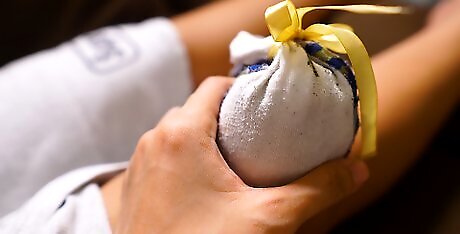
Soothe with arthritis pain. Arthritis pain is often helped with heat, and a rice sock is a great way to apply this heat. Warm the rice sock and apply it to aching joints for 20 minutes at a time.




















Comments
0 comment